Extreme rainfall induced risk mapping for metro transit systems: Shanghai metro network as a case
文章作者(*為通訊):
1. Dongming Zhang?1,3,*
2. Hao Bai?1,3
3. Canzheng Zheng?5
4. Hongwei Huang?1,3
5. Bilal M. Ayyub?2,3,4
6. Wenjun Cao?6
作者單位:
1.Key Laboratory of Geotechnical and Underground Engineering of Minister of Education and Department of Geotechnical Engineering, Tongii University, Shanghai 200092, China
2.Center for Technology and Systems Management, Department of Civil and Environmental Engineering, University of Maryland, College Park, MD,20742, USA
3.International Joint Research Center for Resilient Infrastructure, Tongji University, China
4.Applied Economics Office, National Institute of Standards and Technology, Department of Commerce, USA
5.Jinan Rail Transit Group Co., Ltd, Jinan, China
6.Department of Civil Engineering, the University of Hong Kong, Hong Kong, China
關(guān)鍵詞:
Risk assessment; Metro flooding; Extreme rainfall; Multi-layer network; Resilience.
原文鏈接:
https://doi.org/10.1016/j.ress.2025.111234
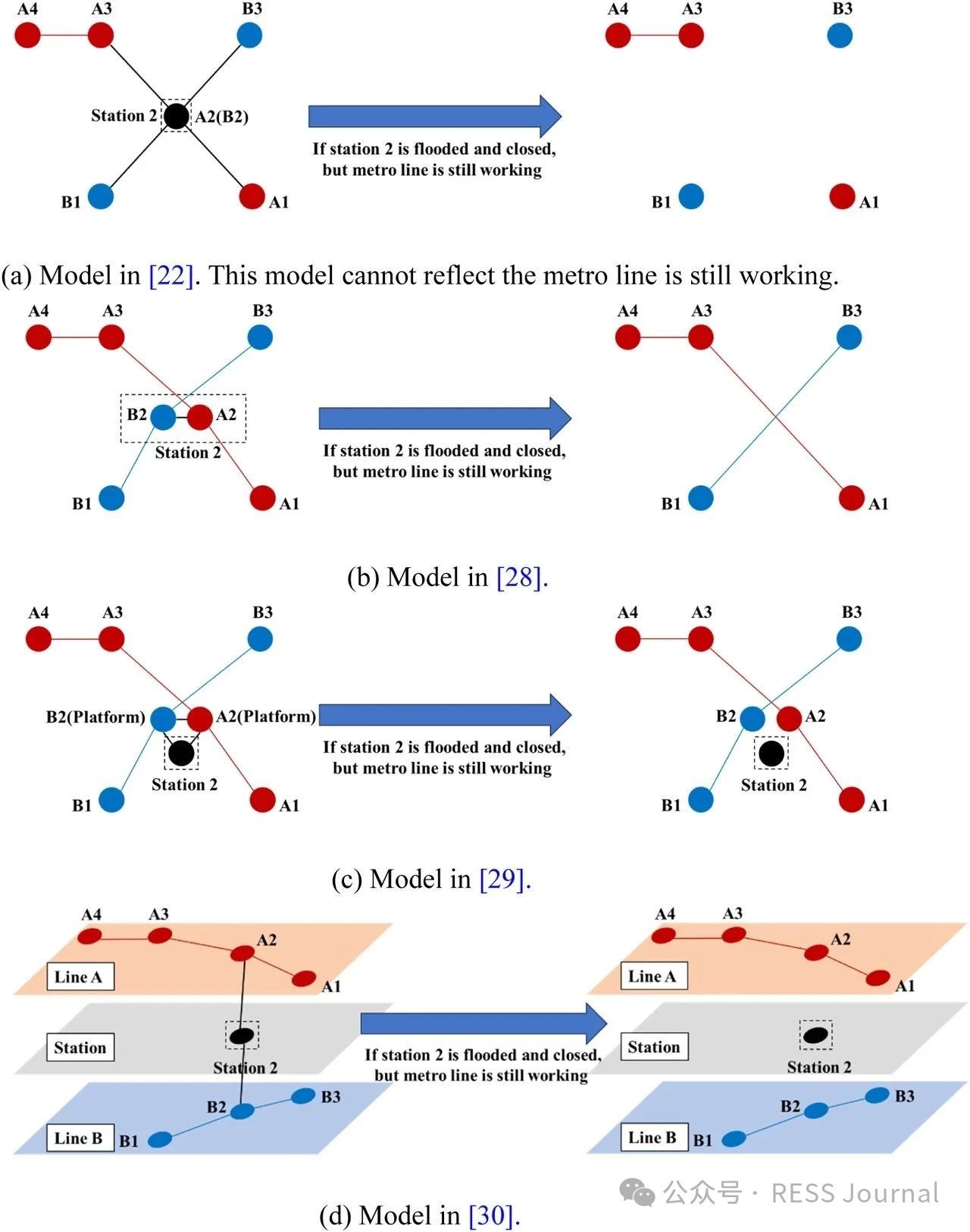

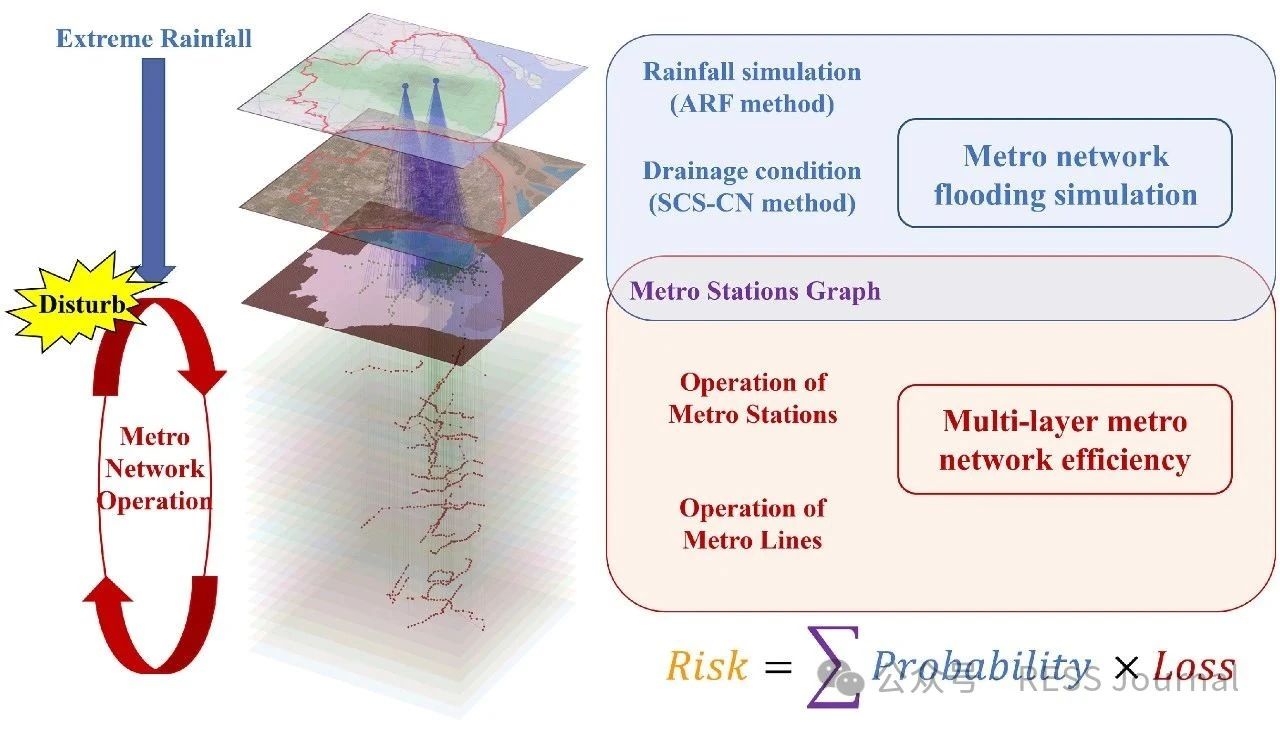
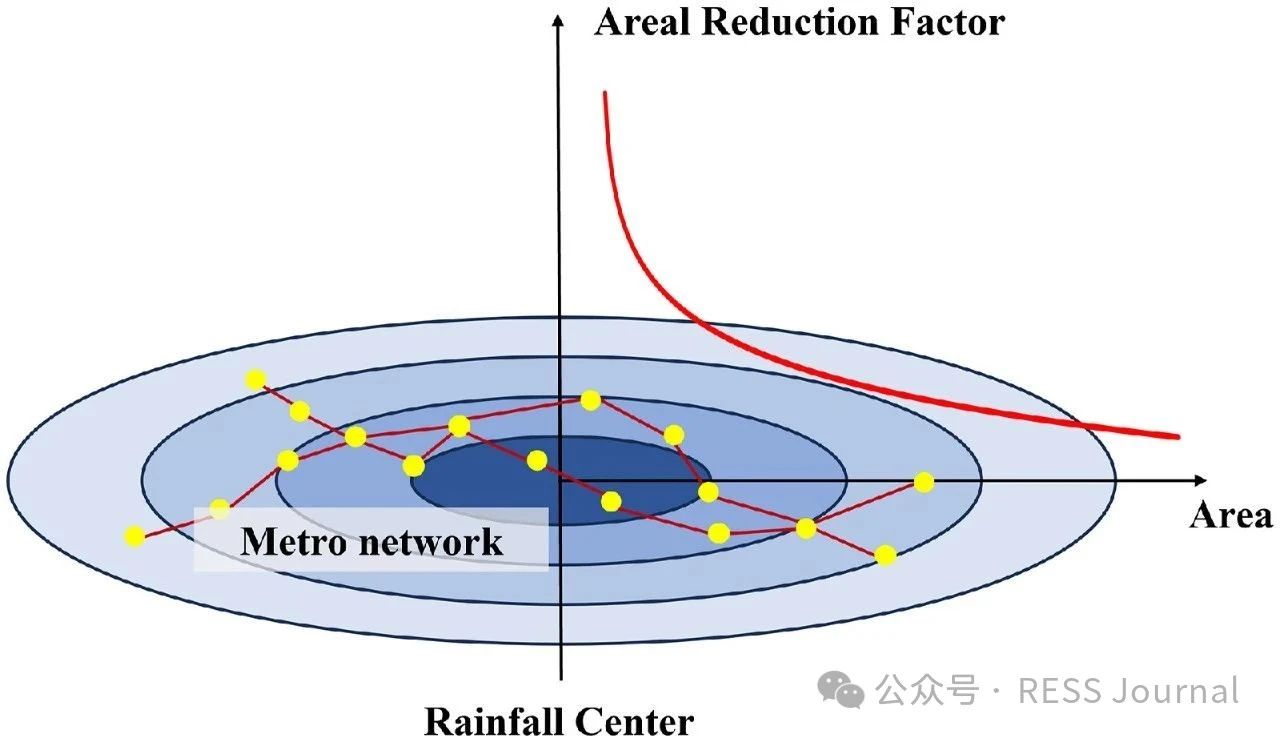
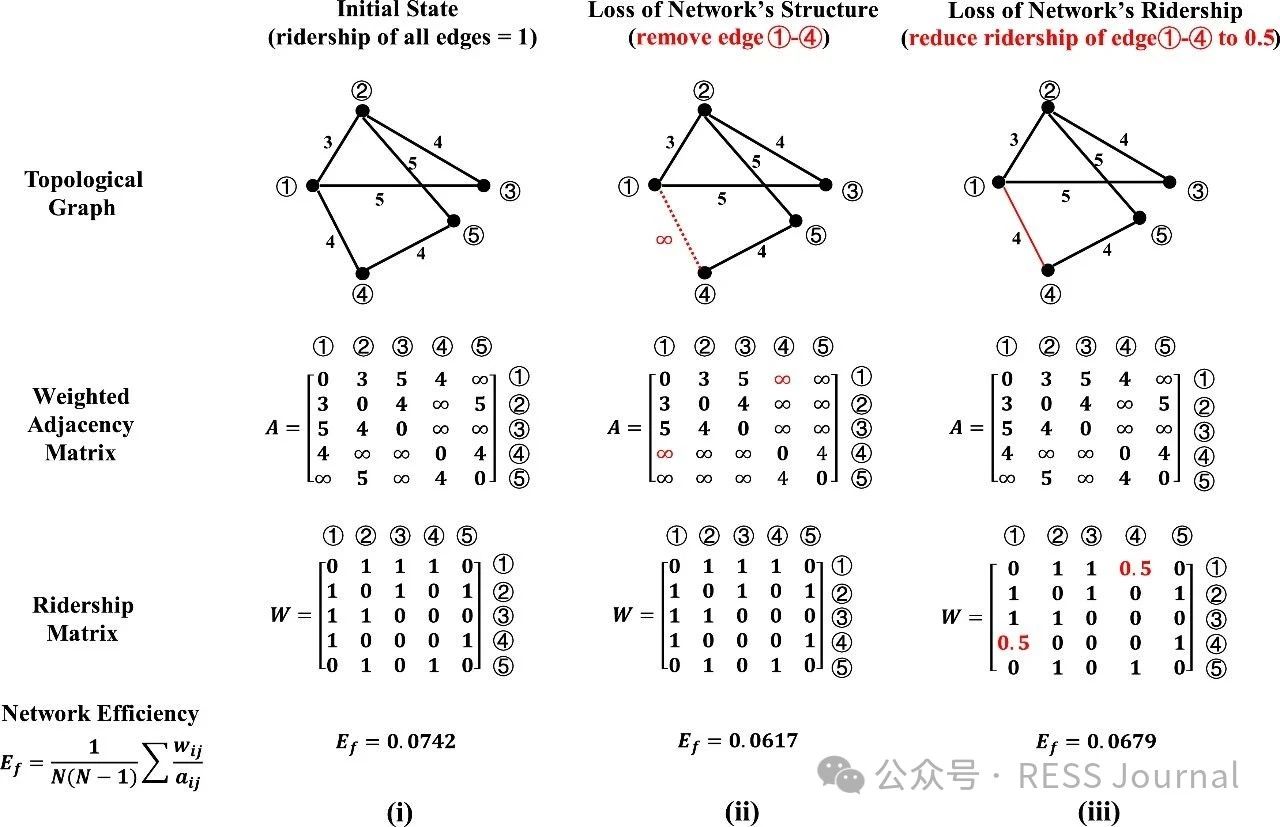
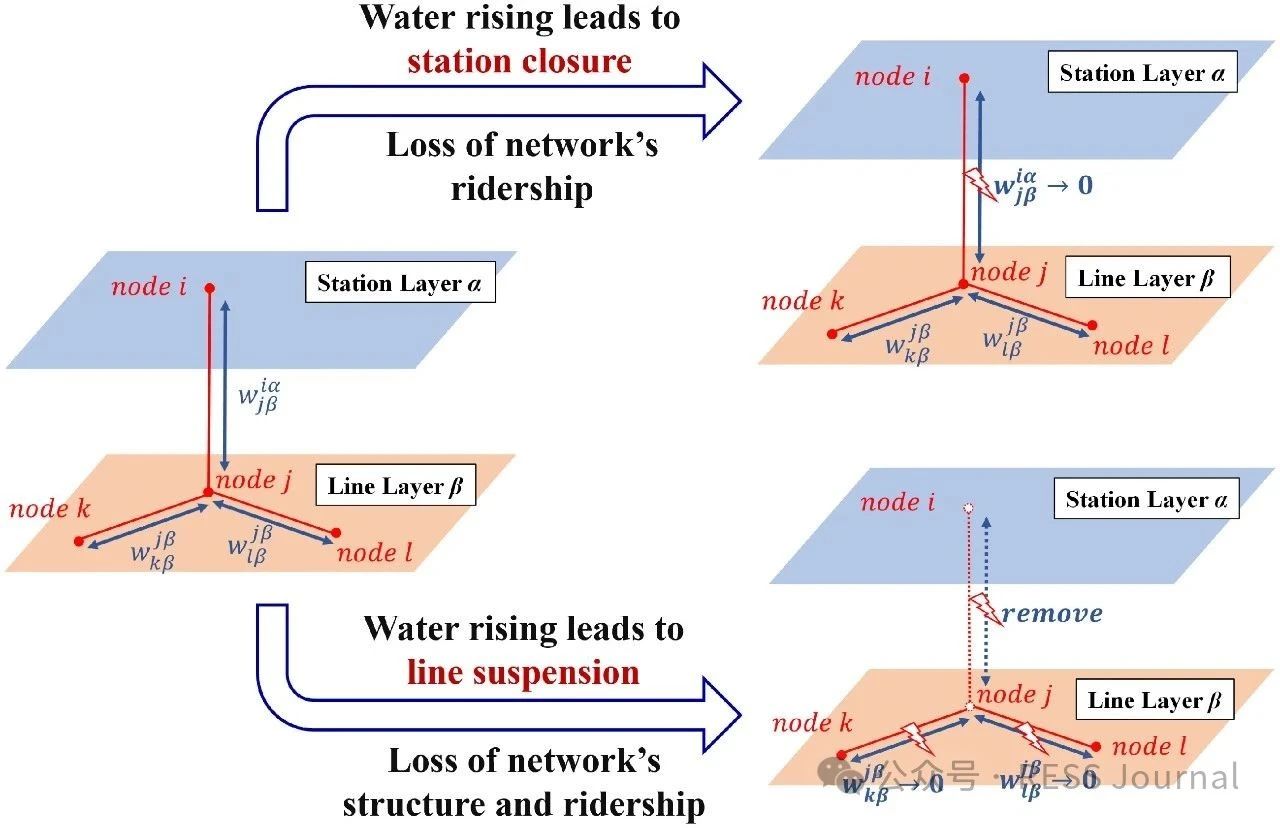
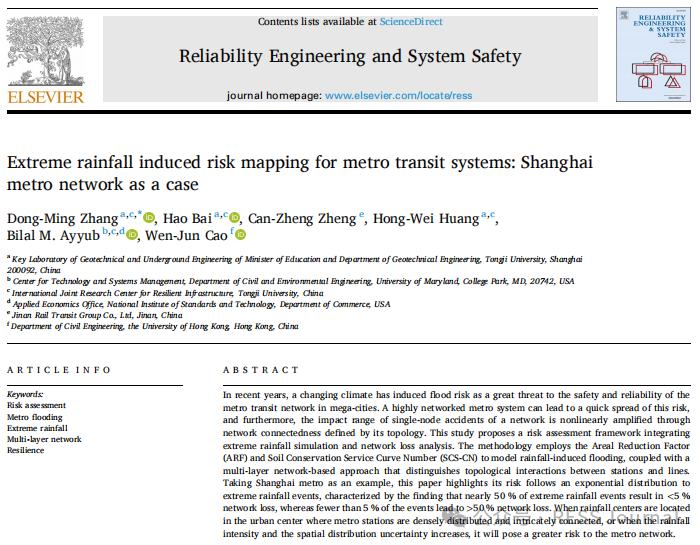
In recent years, a changing climate has induced flood risk as a great threat to the safety and reliability of the metro transit network in mega-cities. A highly networked metro system can lead to a quick spread of this risk, and furthermore, the impact range of single-node accidents of a network is nonlinearly amplified through network connectedness defined by its topology. This study proposes a risk assessment framework integrating extreme rainfall simulation and network loss analysis. The methodology employs the Areal Reduction Factor (ARF) and Soil Conservation Service Curve Number (SCS-CN) to model rainfall-induced flooding, coupled with a multi-layer network-based approach that distinguishes topological interactions between stations and lines. Taking Shanghai metro as an example, this paper highlights its risk follows an exponential distribution to extreme rainfall events, characterized by the finding that nearly 50 % of extreme rainfall events result in <5 % network loss, whereas fewer than 5 % of the events lead to >50 % network loss. When rainfall centers are located in the urban center where metro stations are densely distributed and intricately connected, or when the rainfall intensity and the spatial distribution uncertainty increases, it will pose a greater risk to the metro network.
相關(guān)推薦:軌道交通展展位預(yù)訂??軌道交通展免費報名參觀
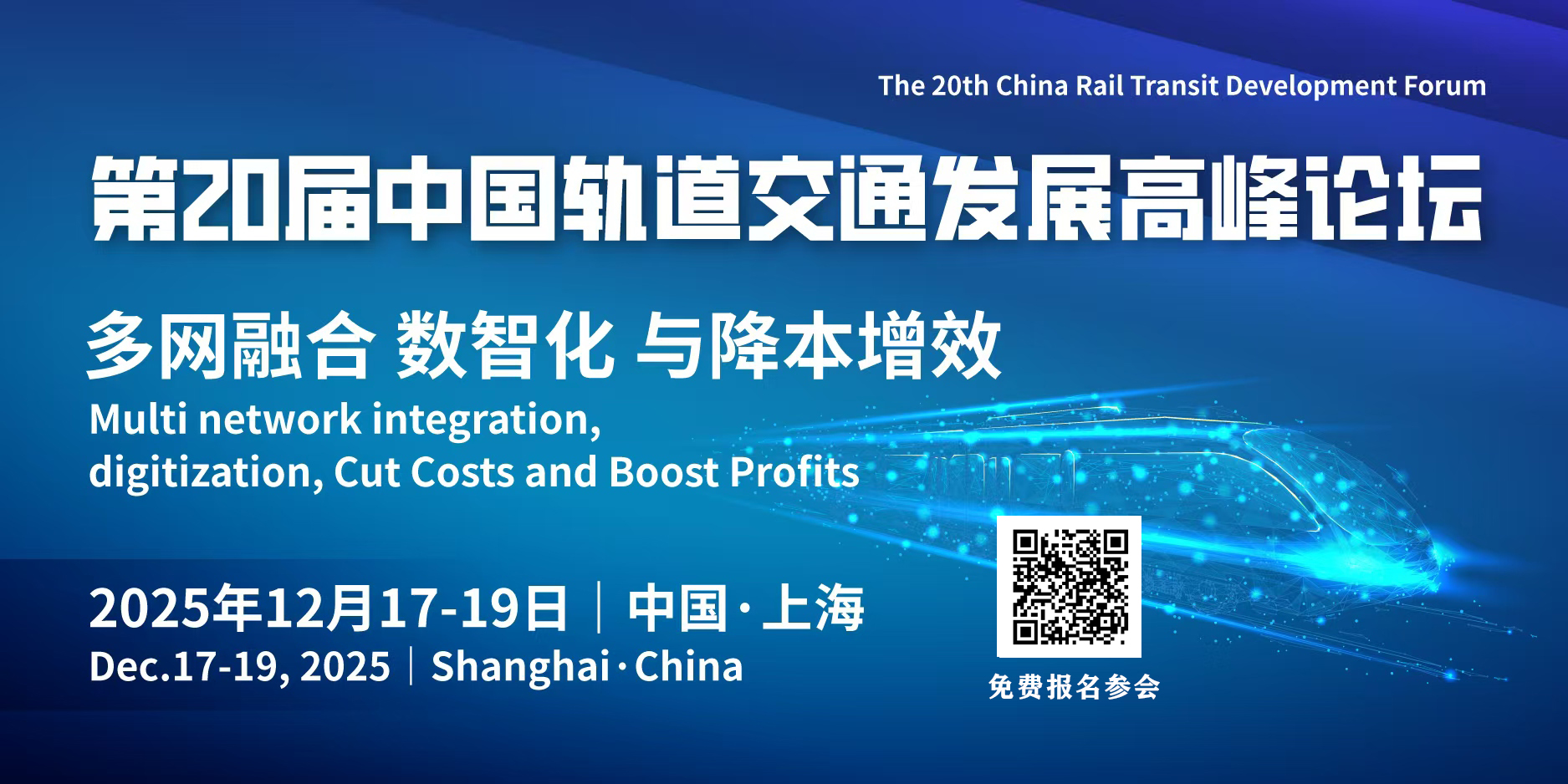
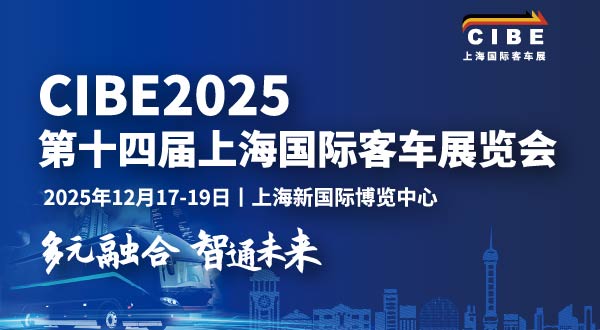
根據(jù)中國汽車流通協(xié)會提供的上牌信息顯示,2025年5月,國內(nèi)客車(含輕客、中客、大客)月度實際銷量達(dá)到4.2萬輛,相比去年同期呈負(fù)增長,降幅為1%。 上牌維度的客車終端實際銷量,更能反映國內(nèi)客車市場需求的真實狀況,進(jìn)一步拉長來看,今年前5個月的數(shù)據(jù)同樣不容樂觀。統(tǒng)計數(shù)據(jù)顯示,2025年1-5月,國內(nèi)客車實際銷量達(dá)到19萬輛,與去年同期的銷量持平。 整體來看,進(jìn)入2025年后,本輪始于2023年的國內(nèi)客車市場快速放量,似乎已進(jìn)入瓶頸期。 從年度銷量數(shù)據(jù),可以明顯看到,2023年之前,國內(nèi)客車市場進(jìn)入增長停滯期,2019年銷量達(dá)到36萬輛后,此后4年時間都在35萬輛上下徘徊,始終難以突破。而2023年開始打破僵局,同比增速達(dá)到14%,年度銷量接近40萬輛,2024年快速拉升,年度銷量一舉突破50萬輛大關(guān),而增速更是高達(dá)29%。 2023年和2024年的快速放量,與多重因素密切相關(guān)。首先是疫情結(jié)束后國內(nèi)旅游市場的爆火,直接拉動2023年國內(nèi)旅團(tuán)細(xì)分市場的客車需求,此后,2024年7月,國家出臺以舊換新政策,推動城市公交車電動化替代,支持新能源公交車及動力電池更新,這一政策有力推動了公交車的更新熱潮,從而推動國內(nèi)公交細(xì)分市場的客車需求集中爆發(fā)。 以公交市場為例,在2024...